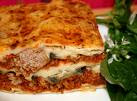Baby Scrapbook Theme Albums From A to Z
Remembering the alphabet and using your baby's photos can be fun and educational for the entire family. Try making an alphabet or ABC baby scrapbook. Attach a colorful letter to each page in baby's scrapbook album, die cut words and photos to remember all of your baby's special moments.
Here are a few suggestions to get you started:
A
Animals (photo from trip to zoo), aunts, apple
B
baby, bottle, bubbles, brothers, birthday, blanket, bibs, booties, books, blue
C
cake, candles, cousins, crawling, cradle, cereal, Christmas, cookie, car seat
D
doll, dog, daddy, diapers, December, duckie, Dora the Explorer
E
eating, ears, Easter, elbow, Elmo
F
First..., fingers, first foods, formula, feeding time, February, fourth of July, father, friend, funny, funny faces
G
Grandma, grandpa, gifts, guests, girls, gurgling, going (to…)
H
Hair cut, hands, home, hospital, happy birthday, Halloween (1st)
I
Icing, ice cream, immunizations, in (the bathtub)
J
Juice, jello, January, jumping, June, July, jar food, jammies
K
Kids, kisses, Kodak moments, kitchen
L
Leaving (waving bye-bye), love, little (fingers and toes), lullabies
M
Mommy, me, my gifts, my ..., "ma-ma", mine!, march, may, music, milk
N
Nose, nursery (rhymes), nursing, nana, November, numbers, naps, newborn
O
One, onesies, osh kosh, October, "oh-oh", orange
P
Presents, parents, party, peek-a-boo, photos, pictures, pink, patty cake, pj's, pots and pans
Q
Quiet, quilts, quality (time)
R
Rattle, rolling over, rocking horse, reading, rocking chair, red
S
Sisters, stories, song, sitting up, solid foods, sippy cup, swing, silly, smiles, September, St. Patrick’s Day, standing, snow, spring, summer, Sponge Bob
T
Top, teeth, toys, Teletubbies, tears, toes, t-shirt, teddy bear, tummy, thanksgiving, tickles, twins, triplets
U
Uncles, unhappy, underwear, under
V
Video, visits, Valentine’s Day, veggies, violet
W
Wash, weight, wagon, walk, wave, winter, white, water
X
Xylophone, x-ray
Y
Yummy food, yams, yogurt, yawn, yeah, yard, year, young, yellow
Z
Zoo, zzz, zippers
I Can Count 1, 2, 3
Cherish all the first, second and third moments of your baby's life with baby scrapbook pages. From the first smile to the first haircut, you will want to treasure these photos with their own baby page. Make a counting baby scrapbook by including pictures of similar photos. Try using one baby, two babies, three girls or boys, four smiles and so forth. Embellish pages with baby stickers, die cutouts and bright, colorful numbers. Add pages and pictures throughout baby's first year. Baby scrapbook theme albums can be used not only to preserve special moments, but also to learn numbers and counting.
Animals, Animals Everywhere
Does your family have a pet? How many stuffed animals are in your baby's room or toy room? How many times has your family visited the zoo? Savor all these animal memories by creating an animal and baby scrapbook album. Use traditional film or a digital camera, take photos of your baby with his favorite teddy bear, playing with your cat, dog or other pet, sleeping in his crib with stuffed animals and photos from your trips to the zoo. Decorate with animal stickers, appliqués and animal theme pages to create a special animal and baby scrapbook theme.











